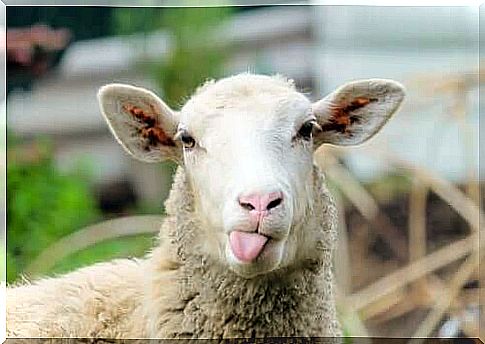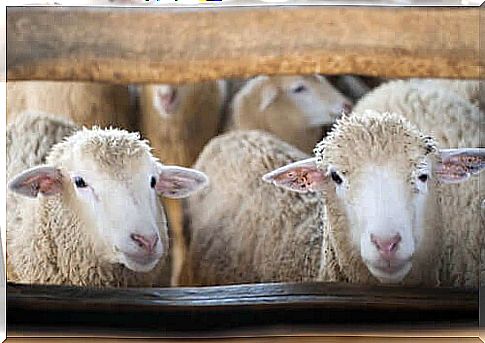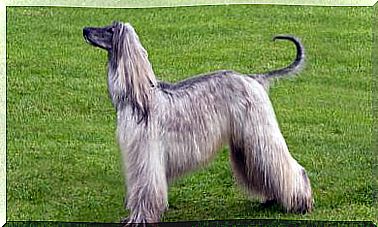Sheep: Feeding And Temperament

Sheep were domesticated over 7,000 years ago. A sheep provides wool, milk, meat and fat to humans. For this reason, sheep have been highly valued throughout human history for their usefulness.
Sheep are shy animals with a very calm temperament. They prefer quiet, peaceful places to graze and ruminate. In general, they are sociable animals. Therefore, sheep prefer to stay with the group and rarely go to remote places alone. Therefore, those that are found alone are often lost.
Sheep are very intelligent animals. Several studies have confirmed that a sheep can recognize up to 60 individual sheep, 5 dogs and at least 10 humans. Obviously, like companion animals, sheep learn their names when they are baptized by their owners. Furthermore, they are also able to answer when they are called.
Sheep Habitat
Sheep habitat is quite varied. Therefore, choosing the ideal place to live depends a lot on the breed of sheep. In this way, sheep can live in grassy plains, semi-desert areas, cold areas close to the polar regions. In addition, they also live in areas that are not polar, but are located at high altitude.
In general, the most prominent feature in sheep habitat is the temperate to cool temperature. This temperature range allows the wool to develop with more quality and also have greater thickness. However, a sheep can adapt to almost any climate as long as it is close to its flock.
The countries with the highest number of sheep are Australia, China, India, Iran and Nigeria. However, it is possible to find sheep living in almost every region of the world. A sheep lives between 10 and 12 years on average. However, you can live for more than 20 years if you have optimal health conditions, adequate diet, sufficient exercise and a stress-free environment.

Morphological characteristics and reproduction
In general, sheep measure between one and two meters in length and reach an average height of one meter in height, depending on the breed. Smaller sheep species can weigh around 35 kg, while large sheep weigh over 100 kg.
Sheep hair is known as wool and its market value depends on the quality of the yarn and the species of the animal. The coat of the sheep, in general, is light in color. Despite this, some breeds have a dark color that is highly desired in the textile market.
Although their auditory and olfactory senses are quite heightened, allowing them to be able to perceive objects at a long distance, the sheep’s vision is quite limited. Due to the location of the eyes on the face, these animals do not have good lateral vision. This characteristic makes them vulnerable to predators.
Sheep have several periods of heat over the course of a year. After a ewe is fertilized, gestation lasts about 150 days (approximately 5 months). Generally, like humans, they have only one offspring per pregnancy.
Sheep Feeding
Sheep are ruminant animals. This means your stomach is divided into four parts. When a sheep eats, the food goes to the stomach first. Soon after, she regurgitates the food, chews it again, and sends it to the second stomach. This process is repeated four times.

For this reason, sheep are usually fed early in the morning and late in the afternoon only. The rest of the time, they spend chewing the food they eat.
Sheep are herbivorous animals. In their natural state, where they can freely graze, they feed on grasses, shrubs and vegetables. In general, these animals are considered herbivores and consume grass in large quantities.
A sheep’s diet varies slightly by breed. Small breeds tend to eat more fiber than large breeds, although larger breeds tend to feed on more diverse plants.
However, a sheep can consume a huge amount of food in a short amount of time. In this way, the digestion of food can be carried out very slowly.
The eating habits of the sheep determine the character and temperament of each animal. In general, they are calm and peaceful animals that avoid emotions and adventures. Therefore, they are very sociable and friendly when treated properly by their caregivers.









